2,6-Dimethoxybenzoic acid
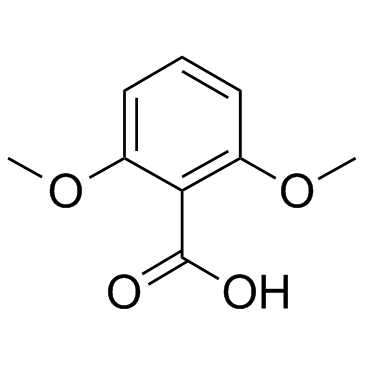
2,6-Dimethoxybenzoic acid structure
|
Common Name | 2,6-Dimethoxybenzoic acid | ||
|---|---|---|---|---|
| CAS Number | 1466-76-8 | Molecular Weight | 182.173 | |
| Density | 1.2±0.1 g/cm3 | Boiling Point | 314.5±22.0 °C at 760 mmHg | |
| Molecular Formula | C9H10O4 | Melting Point | 185187°C | |
| MSDS | Chinese USA | Flash Point | 126.5±15.8 °C | |
| Symbol |

GHS07 |
Signal Word | Warning | |
Use of 2,6-Dimethoxybenzoic acid2,6-Dimethoxybenzoic acid is a member of organic compounds known as o-methoxybenzoic acids and derivatives. |
| Name | 2,6-Dimethoxybenzoic acid |
|---|---|
| Synonym | More Synonyms |
| Description | 2,6-Dimethoxybenzoic acid is a member of organic compounds known as o-methoxybenzoic acids and derivatives. |
|---|---|
| Related Catalog | |
| Target |
Human Endogenous Metabolite |
| Density | 1.2±0.1 g/cm3 |
|---|---|
| Boiling Point | 314.5±22.0 °C at 760 mmHg |
| Melting Point | 185187°C |
| Molecular Formula | C9H10O4 |
| Molecular Weight | 182.173 |
| Flash Point | 126.5±15.8 °C |
| Exact Mass | 182.057907 |
| PSA | 55.76000 |
| LogP | 0.98 |
| Vapour Pressure | 0.0±0.7 mmHg at 25°C |
| Index of Refraction | 1.533 |
| Water Solubility | 0.35 g/100 mL (25 ºC) |
Synonym:None known Section 2 - COMPOSITION, INFORMATION ON INGREDIENTS
Risk Phrases: None Listed. Section 3 - HAZARDS IDENTIFICATION EMERGENCY OVERVIEW
The toxicological properties of this material have not been fully investigated. Potential Health Effects Eye: May cause eye irritation. Skin: May cause skin irritation. Ingestion: May cause irritation of the digestive tract. The toxicological properties of this substance have not been fully investigated. Inhalation: May cause respiratory tract irritation. The toxicological properties of this substance have not been fully investigated. Chronic: No information found. Section 4 - FIRST AID MEASURES Eyes: Flush eyes with plenty of water for at least 15 minutes, occasionally lifting the upper and lower eyelids. Get medical aid. Skin: Get medical aid. Flush skin with plenty of water for at least 15 minutes while removing contaminated clothing and shoes. Wash clothing before reuse. Ingestion: Never give anything by mouth to an unconscious person. Get medical aid. Do NOT induce vomiting. If conscious and alert, rinse mouth and drink 2-4 cupfuls of milk or water. Inhalation: Remove from exposure and move to fresh air immediately. If not breathing, give artificial respiration. If breathing is difficult, give oxygen. Get medical aid. Notes to Physician: Section 5 - FIRE FIGHTING MEASURES General Information: As in any fire, wear a self-contained breathing apparatus in pressure-demand, MSHA/NIOSH (approved or equivalent), and full protective gear. During a fire, irritating and highly toxic gases may be generated by thermal decomposition or combustion. Extinguishing Media: Use agent most appropriate to extinguish fire. Use water spray, dry chemical, carbon dioxide, or appropriate foam. Section 6 - ACCIDENTAL RELEASE MEASURES General Information: Use proper personal protective equipment as indicated in Section 8. Spills/Leaks: Clean up spills immediately, observing precautions in the Protective Equipment section. Sweep up, then place into a suitable container for disposal. Avoid generating dusty conditions. Provide ventilation. Section 7 - HANDLING and STORAGE Handling: Wash thoroughly after handling. Remove contaminated clothing and wash before reuse. Use with adequate ventilation. Minimize dust generation and accumulation. Avoid contact with eyes, skin, and clothing. Keep container tightly closed. Avoid ingestion and inhalation. Storage: Store in a tightly closed container. Store in a cool, dry, well-ventilated area away from incompatible substances. Section 8 - EXPOSURE CONTROLS, PERSONAL PROTECTION Engineering Controls: Facilities storing or utilizing this material should be equipped with an eyewash facility and a safety shower. Use adequate ventilation to keep airborne concentrations low. Exposure Limits CAS# 1466-76-8: Personal Protective Equipment Eyes: Wear appropriate protective eyeglasses or chemical safety goggles as described by OSHA's eye and face protection regulations in 29 CFR 1910.133 or European Standard EN166. Skin: Wear appropriate protective gloves to prevent skin exposure. Clothing: Wear appropriate protective clothing to prevent skin exposure. Respirators: A respiratory protection program that meets OSHA's 29 CFR 1910.134 and ANSI Z88.2 requirements or European Standard EN 149 must be followed whenever workplace conditions warrant respirator use. Section 9 - PHYSICAL AND CHEMICAL PROPERTIES Physical State: Powder Color: white to off-white Odor: None reported. pH: Not available. Vapor Pressure: Not available. Viscosity: Not available. Boiling Point: Not available. Freezing/Melting Point: 186.00 - 187.00 deg C Autoignition Temperature: Not applicable. Flash Point: Not applicable. Explosion Limits, lower: Not available. Explosion Limits, upper: Not available. Decomposition Temperature: Solubility in water: 35 wt% (25 c) Specific Gravity/Density: Molecular Formula: C9H10O4 Molecular Weight: 182.18 Section 10 - STABILITY AND REACTIVITY Chemical Stability: Stable under normal temperatures and pressures. Conditions to Avoid: Incompatible materials, dust generation, excess heat, strong oxidants. Incompatibilities with Other Materials: Oxidizing agents. Hazardous Decomposition Products: Carbon monoxide, irritating and toxic fumes and gases, carbon dioxide. Hazardous Polymerization: Has not been reported. Section 11 - TOXICOLOGICAL INFORMATION RTECS#: CAS# 1466-76-8: DG8598725 LD50/LC50: CAS# 1466-76-8: Oral, rat: LD50 = >500 mg/kg. Carcinogenicity: 2,6-Dimethoxybenzoic Acid - Not listed by ACGIH, IARC, or NTP. Other: See actual entry in RTECS for complete information. Section 12 - ECOLOGICAL INFORMATION Section 13 - DISPOSAL CONSIDERATIONS Dispose of in a manner consistent with federal, state, and local regulations. Section 14 - TRANSPORT INFORMATION IATA Not regulated as a hazardous material. IMO Not regulated as a hazardous material. RID/ADR Not regulated as a hazardous material. Section 15 - REGULATORY INFORMATION European/International Regulations European Labeling in Accordance with EC Directives Hazard Symbols: Not available. Risk Phrases: Safety Phrases: S 24/25 Avoid contact with skin and eyes. S 28A After contact with skin, wash immediately with plenty of water. S 37 Wear suitable gloves. S 45 In case of accident or if you feel unwell, seek medical advice immediately (show the label where possible). WGK (Water Danger/Protection) CAS# 1466-76-8: No information available. Canada CAS# 1466-76-8 is listed on Canada's NDSL List. CAS# 1466-76-8 is not listed on Canada's Ingredient Disclosure List. US FEDERAL TSCA CAS# 1466-76-8 is listed on the TSCA inventory. SECTION 16 - ADDITIONAL INFORMATION N/A |
| Symbol |

GHS07 |
|---|---|
| Signal Word | Warning |
| Hazard Statements | H302-H315-H319-H335 |
| Precautionary Statements | P261-P305 + P351 + P338 |
| Personal Protective Equipment | dust mask type N95 (US);Eyeshields;Gloves |
| Hazard Codes | Xn:Harmful |
| Risk Phrases | R22;R36/37/38 |
| Safety Phrases | S26-S36-S37/39 |
| RIDADR | NONH for all modes of transport |
| WGK Germany | 3 |
| RTECS | DG8598725 |
| HS Code | 2918990090 |
| Precursor 9 | |
|---|---|
| DownStream 10 | |
| HS Code | 2918990090 |
|---|---|
| Summary | 2918990090. other carboxylic acids with additional oxygen function and their anhydrides, halides, peroxides and peroxyacids; their halogenated, sulphonated, nitrated or nitrosated derivatives. VAT:17.0%. Tax rebate rate:13.0%. . MFN tariff:6.5%. General tariff:30.0% |
|
Kinetic and docking studies of phenol-based inhibitors of carbonic anhydrase isoforms I, II, IX and XII evidence a new binding mode within the enzyme active site.
Bioorg. Med. Chem. 19 , 1381-9, (2011) Carbonic anhydrases (CAs, EC 4.2.1.1) are inhibited by sulfonamides, inorganic anions, phenols, coumarins (acting as prodrugs) and polyamines. A novel class of CA inhibitors (CAIs), interacting with t... |
|
|
Synthesis of aryl ketones by palladium(II)-catalyzed decarboxylative addition of benzoic acids to nitriles.
Angew. Chem. Int. Ed. Engl. 49 , 7733, (2010)
|
|
|
A new polymorph of 2,6-dimeth-oxy-benzoic acid.
Acta Crystallogr. Sect. E Struct. Rep. Online 67(Pt 12) , o3394-5, (2011) A new crystalline form of 2,6-dimeth-oxy-benzoic acid, C(9)H(10)O(4), crystallizing in a tetra-gonal unit cell has been identified during screening for co-crystals. The asymmetric unit comprises a non... |
| EINECS 215-985-4 |
| 2,6-dimethoxybenzioc acid |
| 2,6-Dimethoxybenzoic acid |
| Benzoic acid,2,6-dimethoxy |
| MFCD00002437 |
| Benzoic acid, 2,6-dimethoxy- |
| 2,6-Dimethoxy-benzoesaeure |
| Benzoic acid,6-dimethoxy |
| 2,6-dimethoxy benzoic acid |
| 2,6-dimethoxylbenzoic acid |
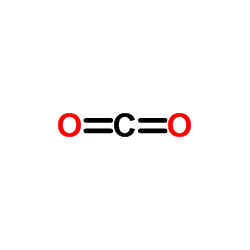 CAS#:124-38-9
CAS#:124-38-9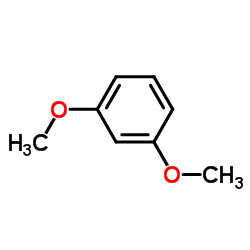 CAS#:151-10-0
CAS#:151-10-0 CAS#:108-90-7
CAS#:108-90-7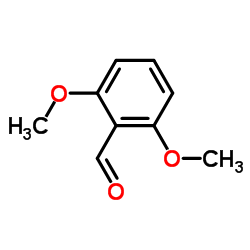 CAS#:3392-97-0
CAS#:3392-97-0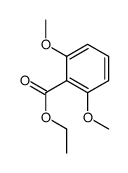 CAS#:1464-96-6
CAS#:1464-96-6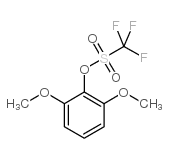 CAS#:60319-07-5
CAS#:60319-07-5 CAS#:336621-33-1
CAS#:336621-33-1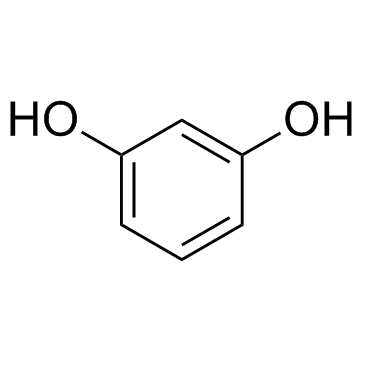 CAS#:108-46-3
CAS#:108-46-3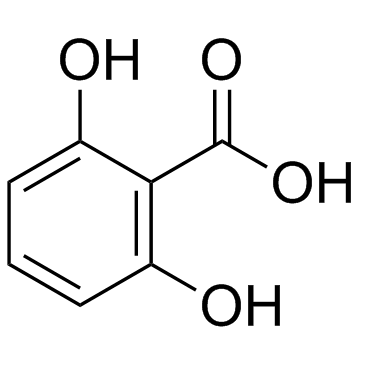 CAS#:303-07-1
CAS#:303-07-1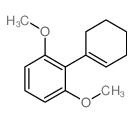 CAS#:27124-92-1
CAS#:27124-92-1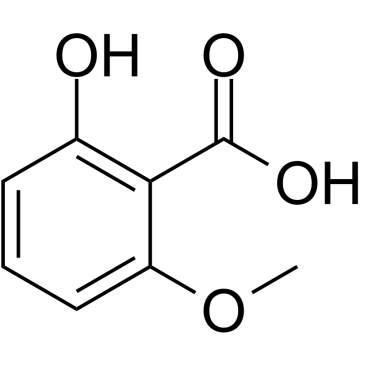 CAS#:3147-64-6
CAS#:3147-64-6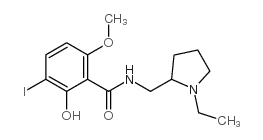 CAS#:84226-06-2
CAS#:84226-06-2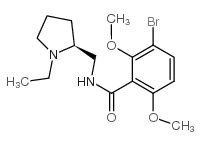 CAS#:80125-14-0
CAS#:80125-14-0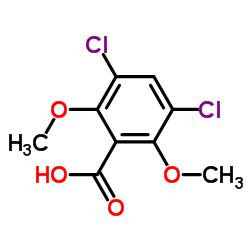 CAS#:73219-91-7
CAS#:73219-91-7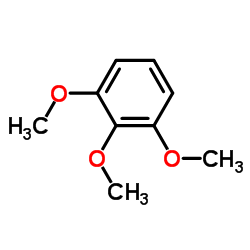 CAS#:634-36-6
CAS#:634-36-6
